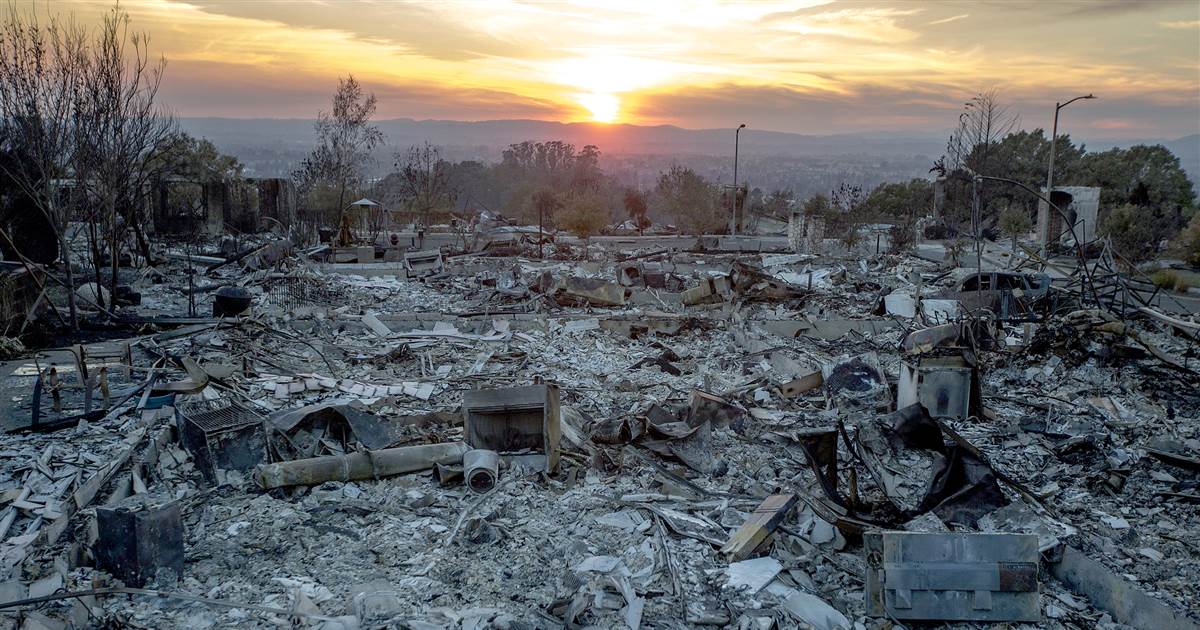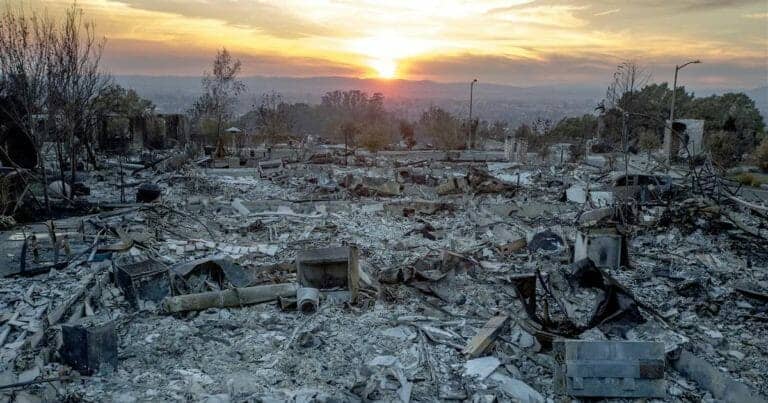Photo: The ruins of houses destroyed by the Tubbs Fire on Oct. 14, 2017 in Santa Rosa, California. David McNew / Getty Images file
At least 65 percent of the public water supply in the Western U.S. comes from fire-prone areas, and wildfires can taint water with toxins and parasites.
Gerald and Serene Buhrz were among the lucky ones.
When they fled their home at 2:00 a.m. on Oct. 8, 2017, the flames of the massive Tubb Fire had already engulfed most of the Fountaingrove neighborhood on the north side of Santa Rosa, Calif. They returned to their devastated street eight hours later to find their two-story stucco home still standing. It was surrounded by the embers of burned houses but untouched by flames.
Not all fire damage , however, is visible to the eye.
When Serene Buhrz turned the water on for the first time several days later, the chemical smell from their kitchen tap was overpowering.
"It was so strong you felt like you couldn’t light a match," said her husband Gerald.
He called the city water department immediately, and got the agency to send someone to test the water.
Santa Rosa Water found the problem was not confined to the Buhrz home. Throughout Fountaingrove, plastic water pipes had melted as houses burned, releasing a carcinogenic chemical called benzene into the neighborhood’s water system.
For nearly a year after the fire, Fountaingrove residents were told not to drink water from the tap, even if it was boiled […]
Full article: After the fire: Blazes pose hidden threat to the West’s drinking water
More about benzene and public health:
‘Like a Terror Movie’: How Climate Change Will Cause More Simultaneous Disasters
How the Benzene Tree Polluted the World
Cancer-Causing Chemical Found in Some Santa Rosa Drinking Water
Fracking Is Dangerous To Your Health — Here’s Why



